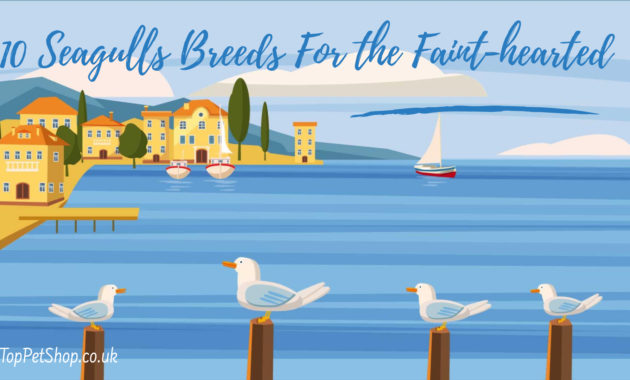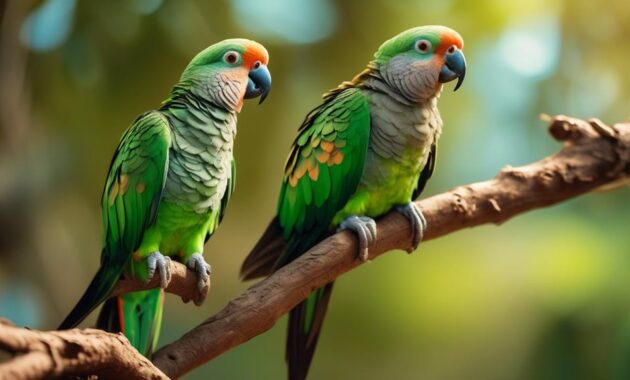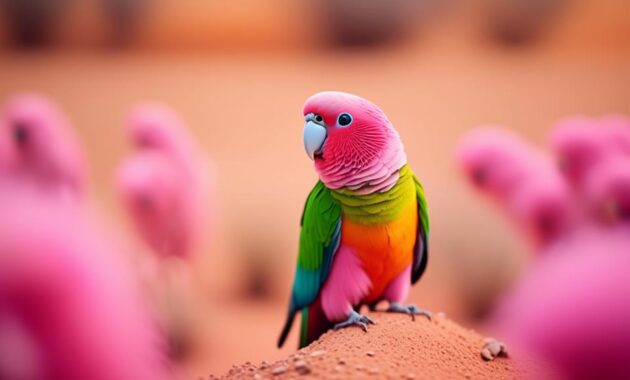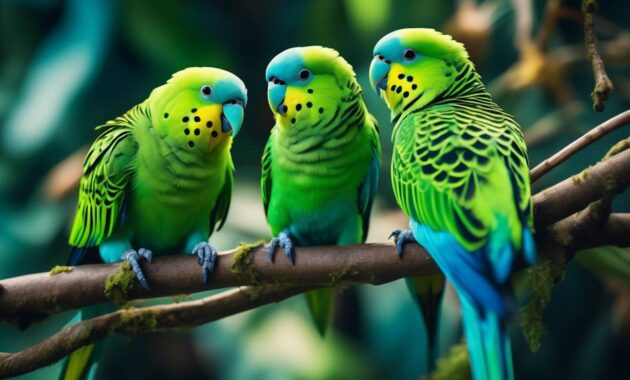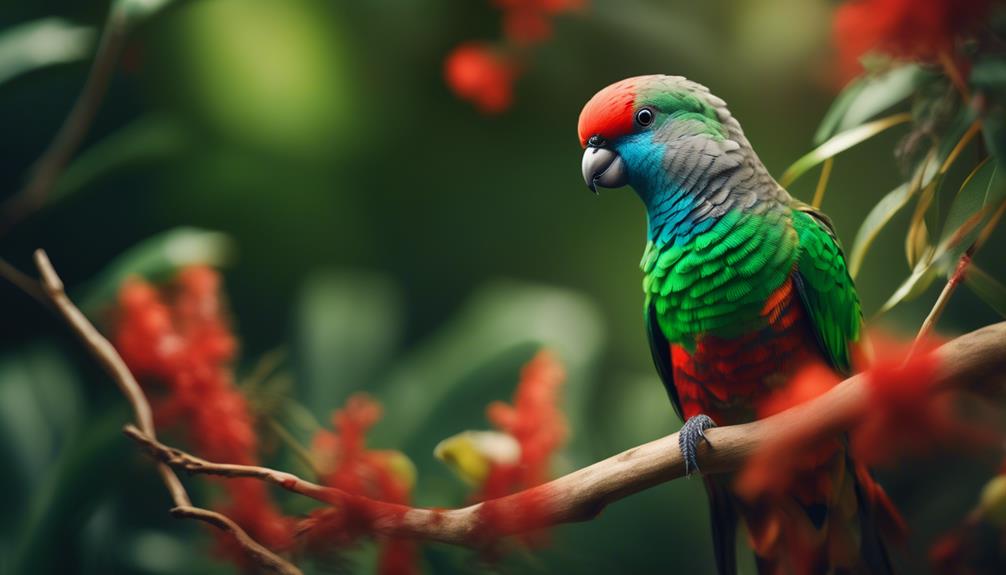
Looking for a companion that is both colorful and charming? Look no further than the Red Rumped Parrot. With its vibrant plumage and endearing personality, this bird is sure to capture your attention.
But there’s more to this parrot than just its appearance. From its unique vocalizations to its suitability as a pet, there’s a whole world to discover about the Red Rumped Parrot.
So, why not join us as we delve into the fascinating world of this captivating bird?
Key Takeaways
- Red Rumped Parrots are medium-sized birds, measuring approximately 11 inches in length and weighing around 3 ounces.
- They have a long lifespan of 15-32 years, making them long-term companions with proper care and a healthy diet.
- Red Rumped Parrots belong to the Parrot family and are the only member of their genus or family, adding to their uniqueness as pets and aviary birds.
- Males have beautiful pastel colors with an emerald green or teal body, while females have a more subdued appearance.
Size and Lifespan of the Red Rumped Parrot
The size and lifespan of the Red Rumped Parrot make it a unique and fascinating bird to own. These parrots measure approximately 11 inches in length and weigh around 3 ounces. Their long, tapered tail adds to their size, so they require ample space to thrive.
Surprisingly, these birds can live for 15-32 years, which is quite lengthy for a bird of their size. With proper care and a healthy diet, they can become long-term companions. The Red Rumped Parrot belongs to the Parrot family and is the only member of its genus or family, making it even more special.
In terms of appearance, males exhibit a whirlwind of soft, pastel colors with an emerald green or teal body and a bright green lower back. Females have a more subdued appearance. These vocal birds produce natural calls, melodic chirps, and series of tweets, but they aren’t skilled talkers or mimics. Their noise levels are balanced and pleasant.
Due to their size, lifespan, appealing colors, and unique classification, Red Rumped Parrots are suitable as both pets and aviary birds, making them a rewarding choice.
Bird Species and Classification
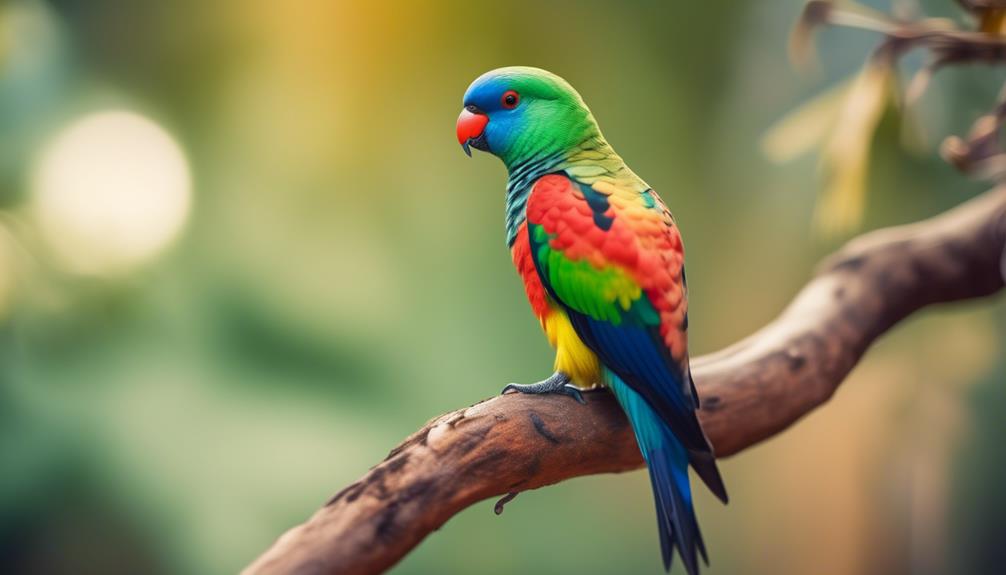
To understand the uniqueness of the Red Rumped Parrot, it’s important to explore its bird species and classification.
- Red Rumped Parrots belong to the Parrot family and are the only member of their genus or family. Their unique classification adds to their appeal as pets and aviary birds.
- Being parrots, they share certain characteristics with other parrot species.
- Red Rumped Parrots come in a variety of colors. Males have a whirlwind of soft, pastel colors with an emerald green or teal body and a bright green lower back. Females have a more subdued appearance.
- Red Rumped Parrots are vocal birds, producing natural calls, melodic chirps, and series of tweets. Their noise levels are balanced and pleasant. They aren’t skilled talkers or mimics. They become most vocal during specific times of the day or during feeding and courting.
The bird species and classification of Red Rumped Parrots contribute to their unique qualities and make them fascinating companions for bird enthusiasts.
Colors and Appearance of the Red Rumped Parrot
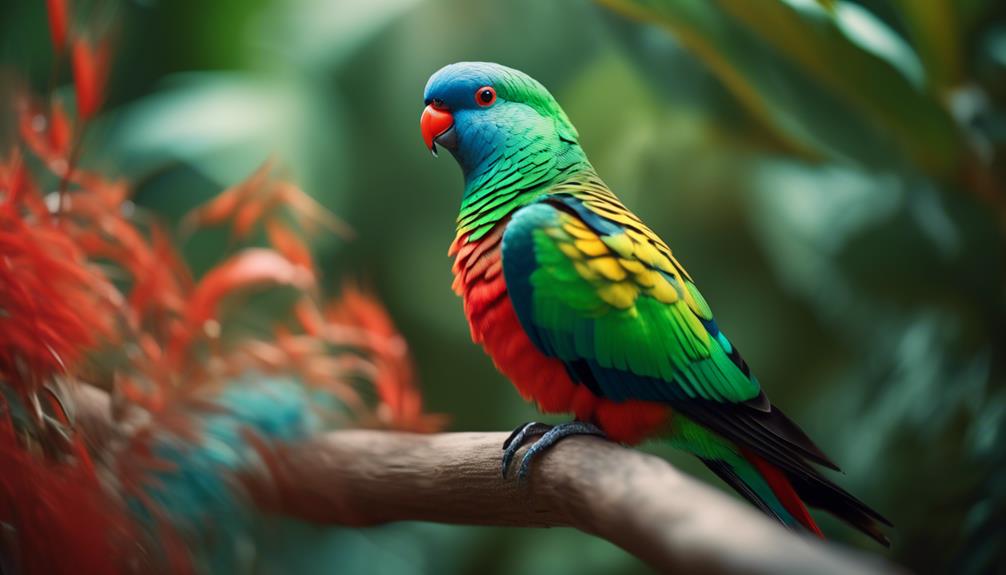
With their vibrant and captivating plumage, the Red Rumped Parrot is a sight to behold. Males of this species boast a whirlwind of soft, pastel colors, with an emerald green or teal body and a bright green lower back. Their colors are truly mesmerizing, instantly catching the eye of anyone who sees them.
On the other hand, females have a more subdued appearance. Their plumage lacks the bright colors of the males, but they still possess an elegant charm with their soft hues.
Whether it’s the striking colors of the males or the understated beauty of the females, the Red Rumped Parrot’s appearance is nothing short of delightful.
Vocalization of the Red Rumped Parrot
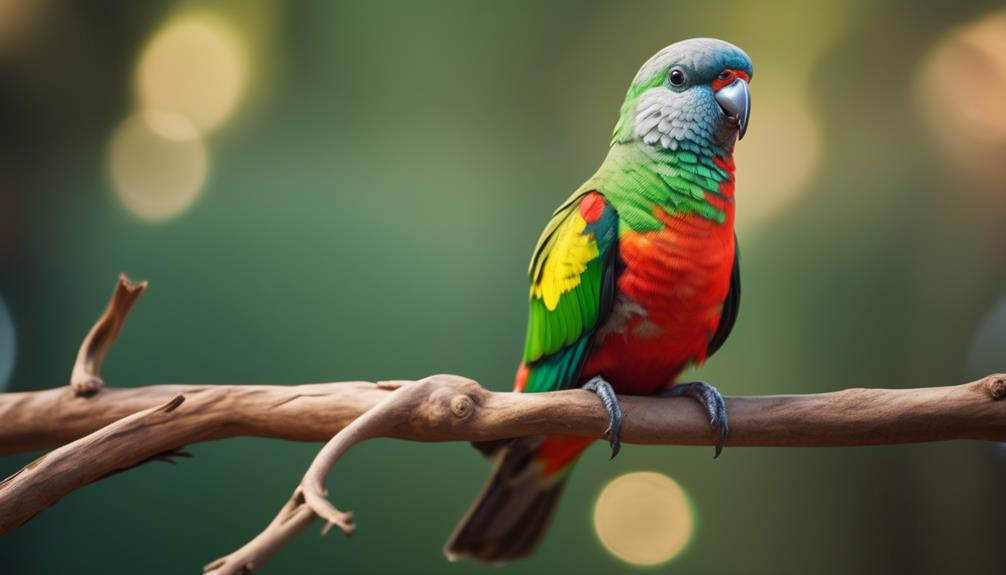
Red Rumped Parrots communicate through a variety of natural calls, melodic chirps, and tweets. Their noise levels are balanced and pleasant, creating a harmonious atmosphere. Although they aren’t skilled talkers or mimics, they make up for it with their charming and unique vocalizations.
Here are four key aspects of their vocalization:
- Specific Times: Red Rumped Parrots become most vocal during certain times of the day, such as early morning or late afternoon. This is when their calls are more frequent and vibrant.
- Feeding Calls: When it’s time to eat, these parrots express their excitement through a series of tweets and chirps. Their vocalizations add to the joyful ambiance during mealtime.
- Courting Sounds: During courtship, male Red Rumped Parrots use their vocal abilities to impress females. They create intricate melodies and calls to attract a mate.
- Social Interaction: Vocalization is an important way for these parrots to communicate with each other. They use their calls to establish and maintain social bonds within their flock.
Suitability as Pets and Aviary Birds
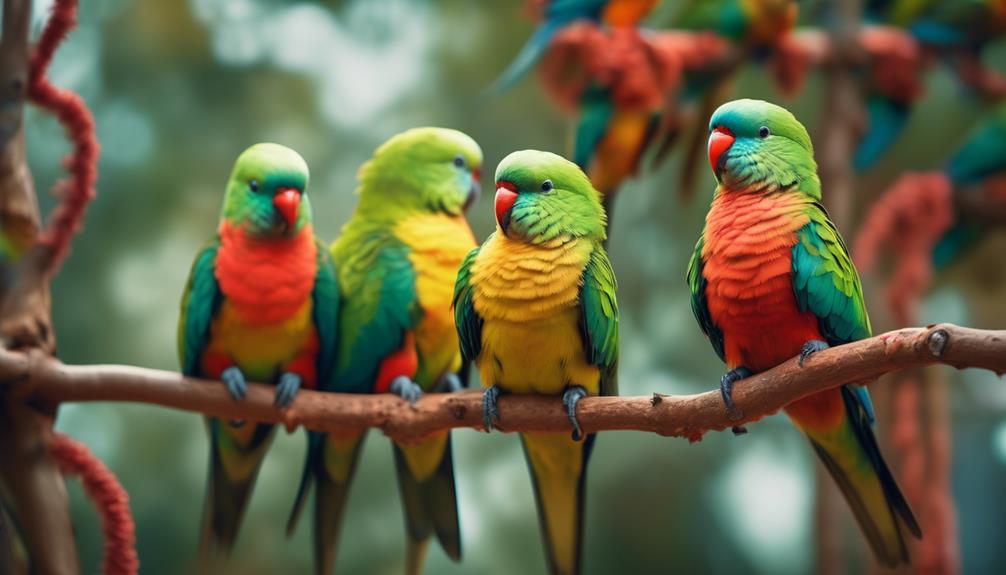
When considering a pet or aviary bird, you should take into account the suitability of the Red Rumped Parrot. Their size, which is approximately 11 inches in length and 3 ounces in weight, makes them suitable for both pet and aviary ownership.
With a lifespan of 15-32 years, they can be long-term companions, especially with proper care and a healthy diet. The Red Rumped Parrot’s appealing colors and unique classification as the only member of their genus or family also contribute to their popularity as pets and aviary birds.
While they’re vocal birds, their noise levels are balanced and pleasant. However, they aren’t skilled talkers or mimics.
Habitat and Natural Behavior
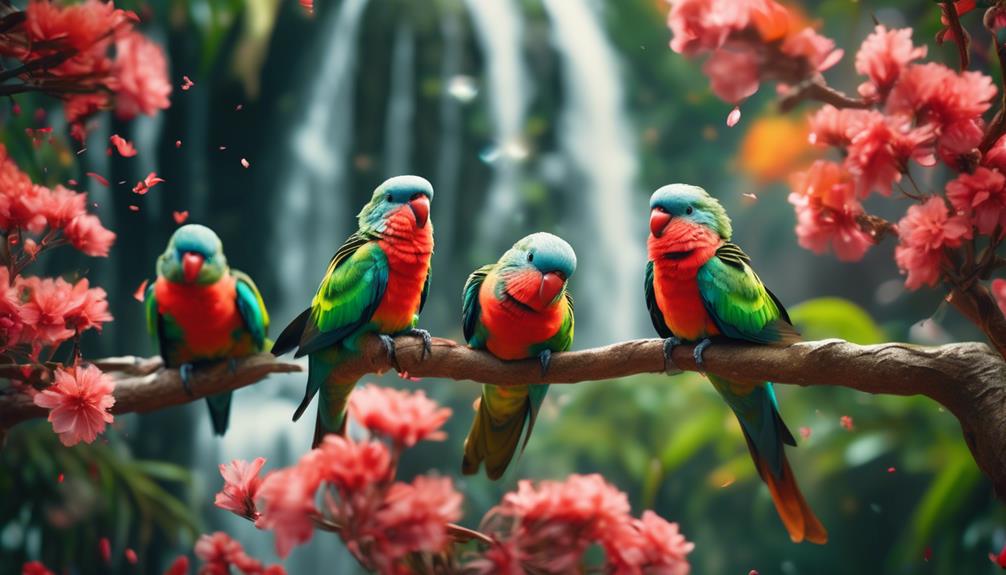
To understand the natural behavior and habitat of the Red Rumped Parrot, it’s important to observe their daily routines and preferred living conditions.
The Red Rumped Parrot is native to Australia and can be found in a variety of habitats, including woodlands, grasslands, and open forests.
They’re social birds and are often found in small flocks or pairs.
These parrots are active during the day and spend their time foraging for food, which primarily consists of seeds, fruits, and insects.
They’re skilled fliers and are known for their acrobatic flight displays.
Diet and Feeding Habits
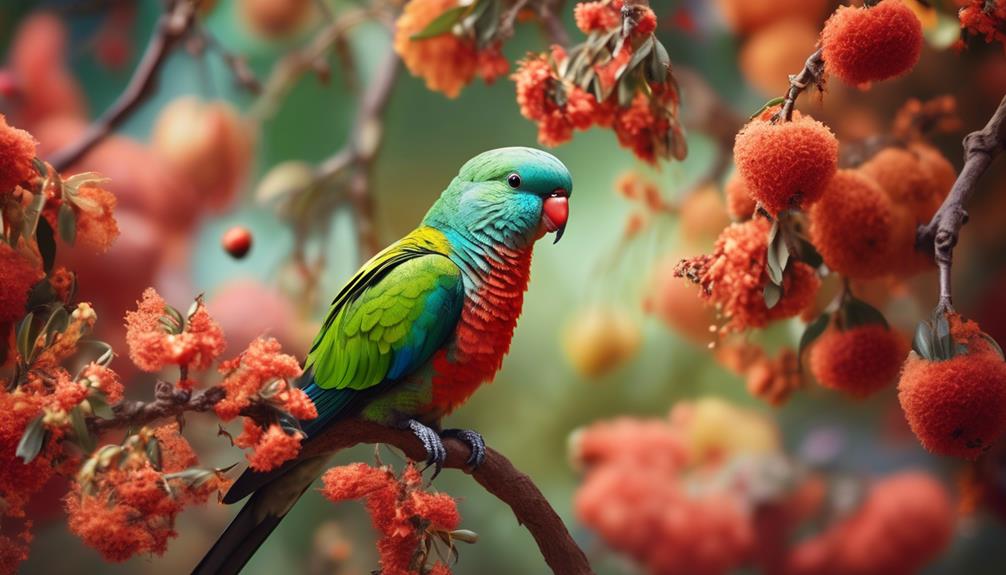
Understanding the natural behavior and habitat of the Red Rumped Parrot can provide insight into their dietary needs and feeding habits. These charming birds have a varied diet consisting of fruits, seeds, flowers, and insects. To help you better understand their diet, here is a table outlining the main food sources for Red Rumped Parrots:
| Food Source | Description | Importance |
|---|---|---|
| Fruits | Includes berries, apples, pears, and melons | Provides essential vitamins and minerals |
| Seeds | Variety of seeds such as sunflower and millet | High in fat and protein for energy |
| Flowers | Nectar from blossoms like eucalyptus and grevillea | Rich source of carbohydrates and nectar |
| Insects | Beetles, ants, and grasshoppers | Essential source of protein for growth and development |
Social Behavior and Bonding
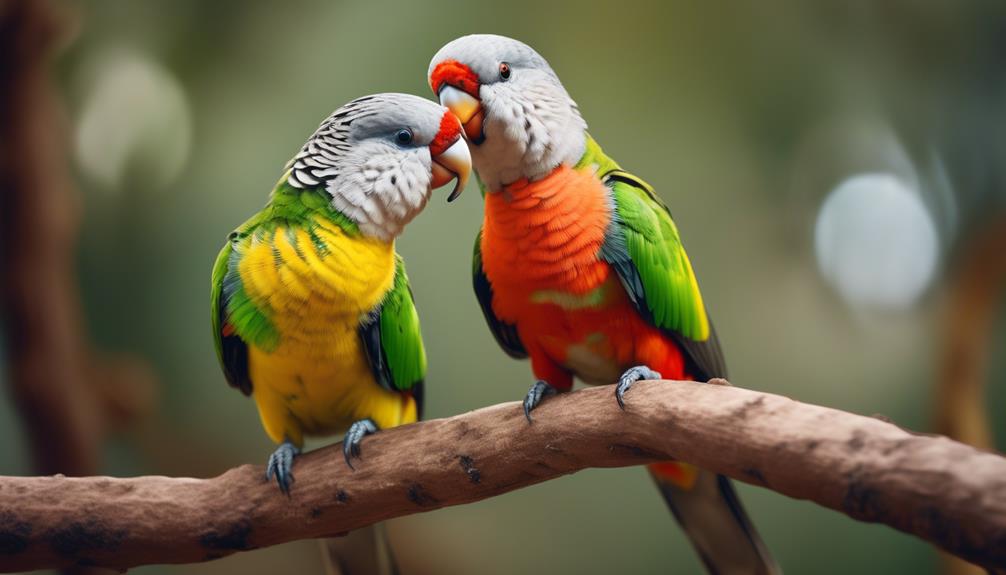
Red Rumped Parrots are highly social birds and form strong bonds with their owners or fellow flock members. They thrive on social interaction and require companionship for their well-being. Here are four key aspects of their social behavior and bonding:
- Flock mentality: Red Rumped Parrots are naturally inclined to live in flocks, where they establish a hierarchical structure and engage in group activities.
- Pair bonding: When kept as pets, they can form deep bonds with their human owners, displaying affection and seeking their attention and companionship.
- Communication: These parrots are excellent communicators and use various vocalizations, body language, and displays to express their emotions and establish social connections.
- Playfulness: Red Rumped Parrots are known for their playful nature, often engaging in games and interactive behaviors with their owners or flock mates.
Understanding and nurturing their social needs is crucial for the well-being and happiness of these charming and colorful birds.
Common Health Issues and Care
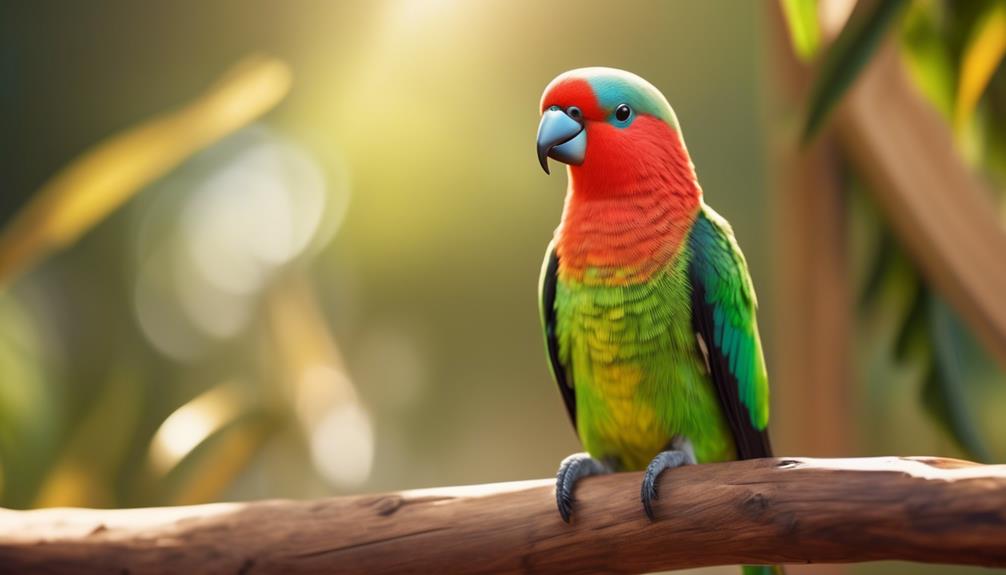
Taking proper care of Red Rumped Parrots involves being aware of common health issues and providing necessary care to ensure their well-being.
One common health issue that can affect these parrots is obesity. Red Rumped Parrots have a tendency to overeat, so it’s important to monitor their diet and provide them with a balanced and nutritious meal plan.
Another health issue to be mindful of is respiratory infections. These can be caused by drafts or poor air quality, so it’s crucial to keep their environment clean and well-ventilated.
Additionally, regular veterinary check-ups are essential to catch any potential health problems early on.
Training and Enrichment for Red Rumped Parrots
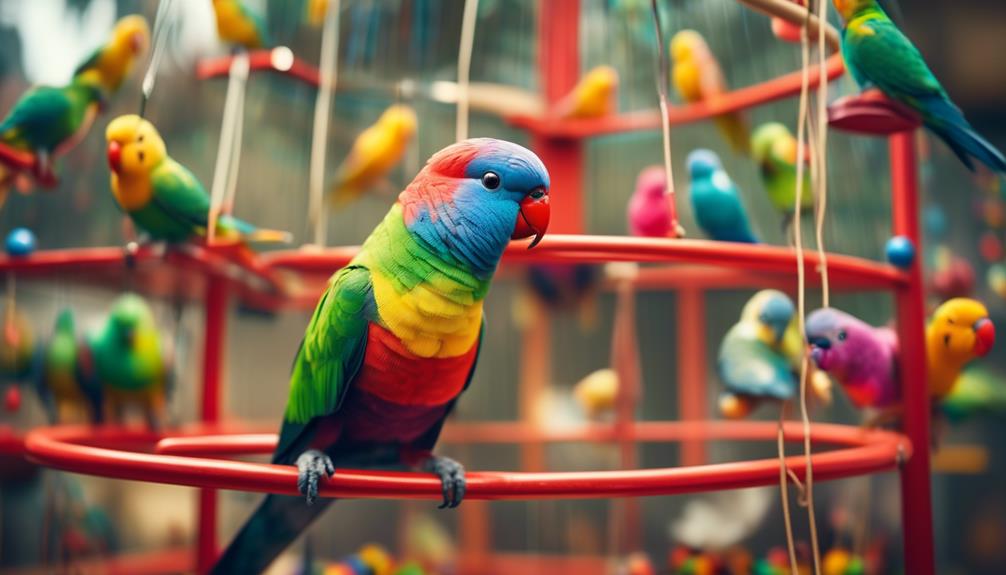
To ensure the well-being and mental stimulation of your Red Rumped Parrot, it’s important to provide them with proper training and enrichment activities. Here are some ideas to keep your feathered friend happy and engaged:
- Teach them simple tricks like stepping up onto your hand or retrieving small objects.
- Provide a variety of toys and puzzles to keep their minds active, such as foraging toys or puzzle feeders.
- Create a stimulating environment by introducing new perches, swings, and climbing structures.
- Spend quality time with your parrot through social interaction and positive reinforcement training.
Frequently Asked Questions
Are Red Rumped Parrots Good Talkers or Mimics?
No, red rumped parrots are not skilled talkers or mimics. They are vocal birds, producing natural calls, melodic chirps, and series of tweets. Their noise levels are balanced and pleasant.
What Are the Specific Colors That Female Red Rumped Parrots Come In?
Female Red Rumped Parrots come in a variety of colors, but their appearance is more subdued compared to males. They lack the whirlwind of pastel colors and instead have a more toned-down appearance.
How Often Do Red Rumped Parrots Vocalize Throughout the Day?
Red Rumped Parrots vocalize throughout the day, but their noise levels are balanced and pleasant. They become most vocal during specific times like feeding and courting. They are not skilled talkers or mimics.
Can Red Rumped Parrots Be Housed With Other Bird Species in an Aviary?
Yes, red rumped parrots can be housed with other bird species in an aviary. They are sociable birds and can coexist peacefully with other compatible species, creating a vibrant and diverse aviary environment.
Do Red Rumped Parrots Require a Specific Type of Diet to Maintain Their Health?
No, red rumped parrots don’t require a specific type of diet to maintain their health. They are adaptable eaters and can thrive on a balanced diet of fruits, vegetables, seeds, and pellets.
What Makes the Red Rumped Parrot Colorful and Charming?
The charming red-capped parrots boast vibrant plumage that makes them a sight to behold. With a stunning red rump and a mix of green, blue, and yellow feathers, these birds stand out in any setting. Their colorful appearance and playful behavior make them a beloved avian species among bird enthusiasts.
Conclusion
In conclusion, if you’re looking for a colorful and charming companion, the Red Rumped Parrot is the perfect choice. With its stunning array of soft, pastel colors and unique appearance, this small-sized bird will capture your heart.
Not only does it have a long lifespan of 15-32 years, but it also produces delightful vocalizations that will fill your home with joy. Whether as a pet or in an aviary, the Red Rumped Parrot is sure to bring beauty and liveliness to your life.

